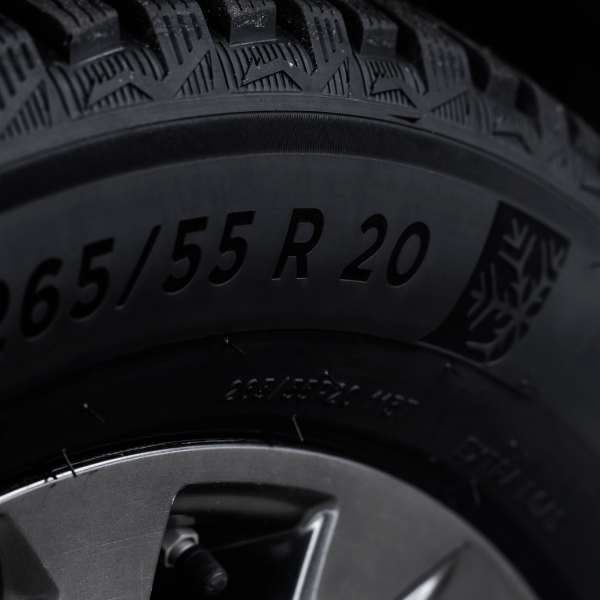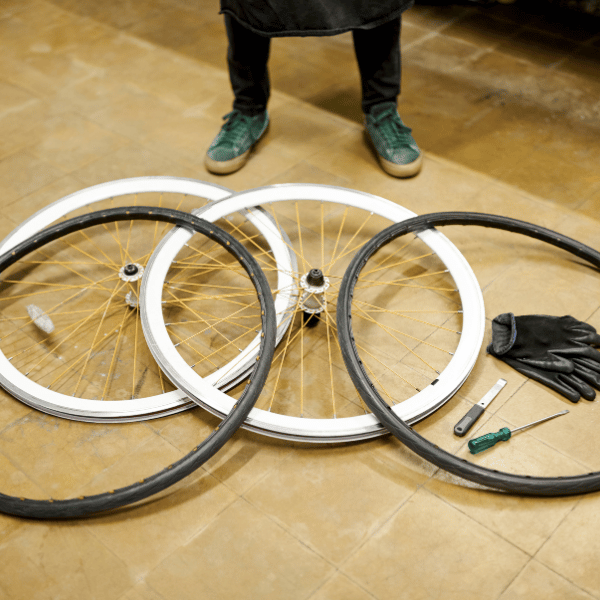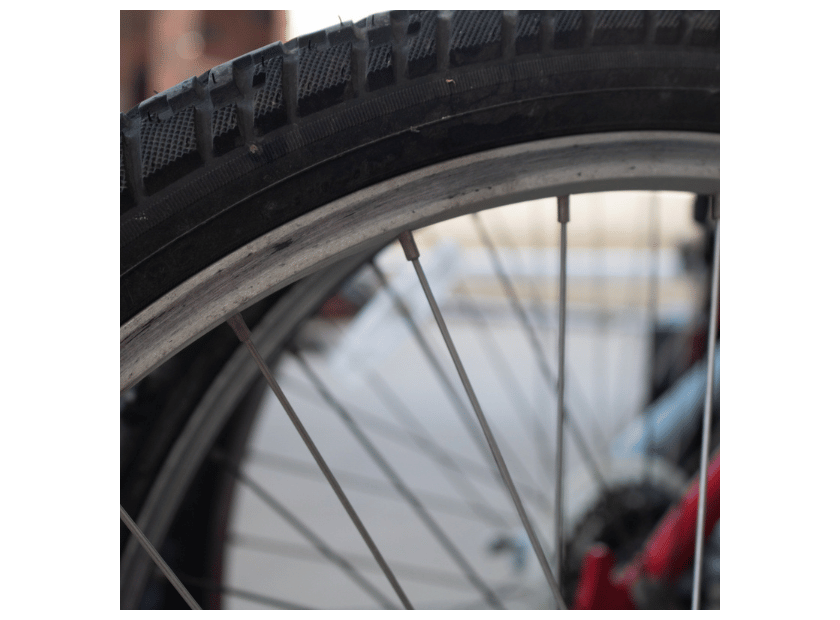Bike Rim Width and Tire Size: An Analytical Guide
Optimization of cycling performance is a function of the intertwined nature of bike rim width and tire size in the biking domain. This guide breaks down the technicalities behind these constituents to explain how they affect ride quality, efficiency, and aerodynamics.
Bicycle riders must understand the precise relationship between rim widths and tire sizes to enhance their biking activities. Thus, we propose an evidence-based decision-making framework that does not have personal bias.
Basic Understanding of Rim and Tire Size
Choosing appropriate bike rim and tire sizes is critical for optimum performance and safety. This guide explains the process for cyclists, helping them make informed decisions about their bicycle gear.
Rim Width versus Tire Size
How tires interact with the road depends on some simple physics principles; different sizes give better comfort or grip but can also change handling characteristics. Wider rims can allow wider tires, which provide more traction, less rolling resistance (due to lower tire pressures), and a more comfortable ride. However, there’s a science in matching up these two things correctly. In essence, the inside width of your tire should be about 1-2 times wider than your inner rim width. This ratio ensures proper fitment of the tire onto the rim, which enhances its overall performance by maintaining a balance between grip levels and rolling resistance.
Pros and Cons of Matching Right Width Rimwith Correct Tire Size
Matching the right-width rims with fitting-sized tires has advantages, such as improved grip on all-terrain roads, stability, and reduced discomfort during long rides. Tires burst less when appropriately matched, and handling improves significantly; however, there are disadvantages, too, such as poor tire profiles leading to rapid wear or even blowouts caused by incorrect matches within this category range (being instead). Sufficient compatibility enhances both safety for riders and maximizes overall performance.
Different Rim Widths’ Standard and Wide Tires
Standard and wide tires differ in performance when used on various rim widths. Standard tires, which are usually narrower, have less rolling resistance and weight, making them the preference of road cyclists. In contrast, wide tires provide more air, leading to better traction and a cushier ride while cycling on gravel or rough trails. The decision to go with either standard or wide-size tires should be based on rider weight, terrain type, and the kind of riding anticipated.
Size Effect on Bicycle Performance
The correct tire size is essential for optimal road bike performance. It dictates how much effort is required to pedal the bicycle forward and how much grip it has when negotiating corners; both factors contribute to the overall speed of movement and comfort level experienced by riders. This section examines the impact these dimensions have on these elements while ensuring safety and economy.
Rolling Resistance with Wider Tyres
It may sound counterintuitive, but bigger tires can offer lower rolling resistance if adequately inflated. Factors such as tire width, pressure, and tread pattern play a significant role in determining this. Although wider tires have a larger contact area with the ground, spreading the weight over this larger area may thus reduce energy consumed per square inch, leading to greater efficiency, especially when riding over bumpy surfaces. However, the correct pressure depends on your tire width, weight, and riding conditions.
How Does Rim Width Play a Role in Enhanced Traction With Wider Tires?
Wider tires always have better traction because of their increased contact patch. The larger contact area allows for more cornering, braking, and acceleration grip. This relationship is also affected by the width of the rim; hence, a wider tire combined with a broader rim enhances the tire's profile, facilitating better grip and stability. For optimal traction, the tire width should match the rim width of the tire’s volume and intended purpose (e.g., rough trails vs. smooth pavement).
Brake Performance and Handling: Choosing the Suitable Tire Size for Safety
Appropriately sized tires play a crucial role in brake performance and handling. More extensive, fatter tires absorb road bumps more effectively, resulting in smoother braking and improved handling. Nonetheless, it is crucial to ensure safe braking and quick cornering and use a suitable tire size, which must be commensurate with rider weight, bike weight, and riding conditions. Hence, it is essential to maintain an equilibrium between these factors when choosing your tire size to avoid oversteering or understeer during rides.
Comparing Different Rim and Tire Widths
To optimize bicycle performance, safety, and comfort, one must consider how wide their rims are compared to their tires’ widths when purchasing them. Different sizes and combinations affect how they feel when ridden across various types of terrain.

Benefits of Using Wider Rims with Wide Tires Over Narrower Options
Wide rims mated with wide tires are increasingly gaining popularity for several reasons. To begin with, this combination allows for lower tire pressures while at the same time improving comfort levels and grip without affecting speed by much. It spreads out the tire, increasing its contact patch on the ground and enhancing traction significantly. Wide rims also strengthen the sidewalls of tires, thereby reducing chances of folding or rolling them over, especially when negotiating corners and improving vehicle control, especially during curves. Key parameters include matching the tire to rim width, ideally within a recommended range to optimize performance without leading to tire roll-off or excessive drag.
Analyzing the Differences in Performance Between Front and Rear Tire Widths
Various cycling disciplines commonly use different tire widths for the front and rear. A wider front tire provides better grip and stability, which is crucial for steering and braking. A narrower rear tire can reduce rolling resistance and improve aerodynamics for better speed. This setup enables control and efficiency if factors such as rider position, bike geometry, and use are considered (like mountain biking vs road racing). Accordingly, the tire's width will be optimized for its purpose, with front tires generally wider than rears by 0.2-0.5 inches.
Measuring the Impact of Different Tire Pressures with Varying Rim Widths
T tire pressure primarily determines the interaction between rim width and tire performance. Wider rims allow lower tire pressures through increased volume and contact patch enhancing grip since they spread out the tire more on the ground; hence, it becomes more stable against skidding due to lack of traction resulting from potholes or other irregularities that may be found on roads or trails . Optimal tire pressures vary according to rim/tire widths and rider weight/riding conditions; e.g., a 2.2-inch wide tire may perform best under lower pressures on a more comprehensive compared to narrow rims (balancing grip versus rolling efficiency). In conclusion, key parameters include rim width, intended use, rider weight, and tire volume to find the optimal point at which air should be left within the tires.
Choosing the Right Combination of Rim Width and Tire Size
Your choice of the best tire size and rim width can significantly affect your bicycle's handling, efficiency, and comfort, thus affecting your riding quality and performance based on the kind of cycling you intend to do.

Factors to Consider When Selecting the Ideal Tire-Rim Combination for Your Bike
Several key factors determine the selection process for obtaining a perfect tire and rim combination:
Riding Discipline: The ideal tire-rim combination differs for mountain, road, and hybrid bikes.
Tire Width and Rim Width Compatibility: Tire widths should be compatible with rim widths to ensure safe operation.
Rider Weight: Wider tires/rims may give better support to heavier riders.
Terrain: Wider tires are needed on rougher or off-road paths, while narrow options work well on smooth pavements.
Bike Geometry and Fit: It should fit correctly without causing any rub or interference with the bike frame or fork.
Effect of Wide Tires and Wide Rims on Fuel Consumption and Speedometer Accuracy
The dynamics of a bicycle in terms of fuel consumption and speedometer readings can be altered by using wider rims together with wider tires. Primarily applicable to motorized cycles:
Fuel Consumption: Broader tires increase rolling resistance, thereby lowering fuel efficiency.
Speedometer Accuracy: Changes in tire size can lead to inaccuracies in speedometer readings unless adjustments are made to account for the new tire circumference.
Maximizing Grip and Handling by Understanding the Relationship Between Tire Width and Tread
To achieve optimal grip and handling characteristics, you must match tire width with tread pattern according to riding conditions:
Wider Tires: More contact with the ground means more grip when traveling over loose surfaces.
Tread Pattern: Choose a tread that suits the terrain. Smooth for roads and pronounced for off-road.
Tire Pressure: Setting pressure right for particular weights on given terrains aids in better performance plus comfortability levels.
Frequently Asked Questions
Q: What is the relationship between bike rim width and tire size?
A: The width of the rim affects how big a tire can fit on it. Wider rims can fit larger tires that provide better grip and stability.
Q: How do bigger wheels impact bike performance?
A: Bigger wheels paired with wider rims and tires will result in better cornering, improved traction, and fewer bumpy rides on rough terrain.
Q: What are the advantages of installing new rims and bigger tires on a bike?
A: Fitting bigger tires and upgrading to new rims improves overall handling characteristics, increases traction on various surfaces, and makes the bicycle more appealing.
Q: How does tire width affect air pressure and performance?
A: Tire width determines recommended air pressure. Wider tires typically require lower air pressures for optimal grip and ride comfort than narrower tires.
Q: What is the importance of considering different width rims for front and rear wheels?
A: Specifically, having different rim widths for the front wheel compared to the rear wheel allows wheel-specific tire sizes/profiles to match each one's function, enhancing the bikes’ handling/performance.
Q. Can changing the tire size and rim width affect vehicle track width?
A. The stability, cornering abilities, and overall handling of a motorcycle might be affected if there are any modifications to its track widths due to changes made about tire sizes and rim widths.
Q: How does the tread width of a tire influence its performance on different surfaces?
A: The contact area is decided by the width of the tread, which determines how well the tire adheres to different road surfaces. Wider treads offer better traction in loose terrain, while narrower ones are suitable for handling paved roads.
References
——
Scientific Journals in Sports Engineering: Research articles from these journals have passed peer reviews, guaranteeing the credibility of research on bike rim width and tire size's effect on performance. These could deal with aerodynamics, rolling resistance, and material science.
Manufacturer Technical Documentation: For example, Shimano, Mavic, and Continental, among others, often give comprehensive specifications about their products as well as technical guides. They contain accurate information about recommended tire sizes for particular rim widths, including material properties and design intentions.
Cycling Industry White Papers: Get white papers from cycling organizations or universities collaborating with cycling companies. These documents can provide detailed analyses of tyre-rim interface efficiency and design innovation.


